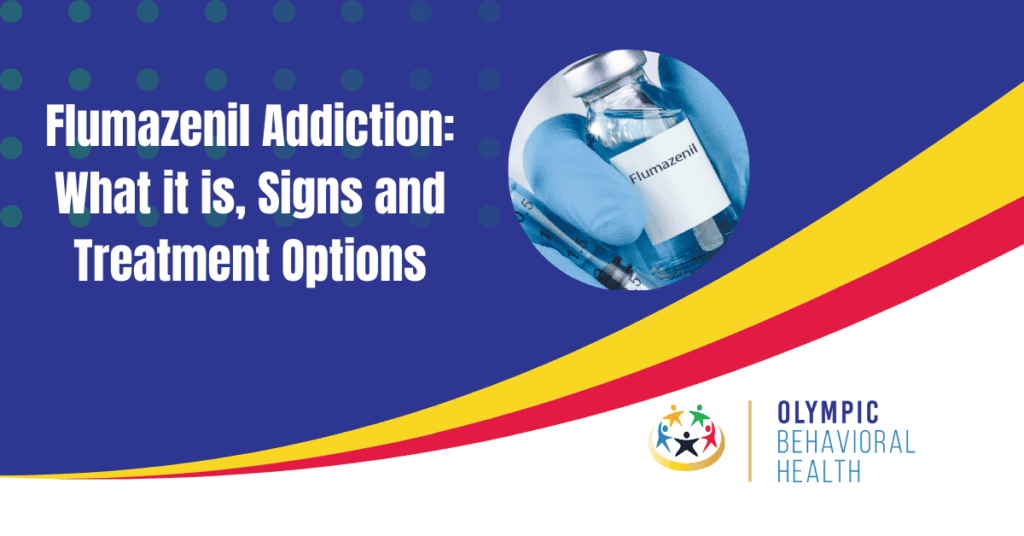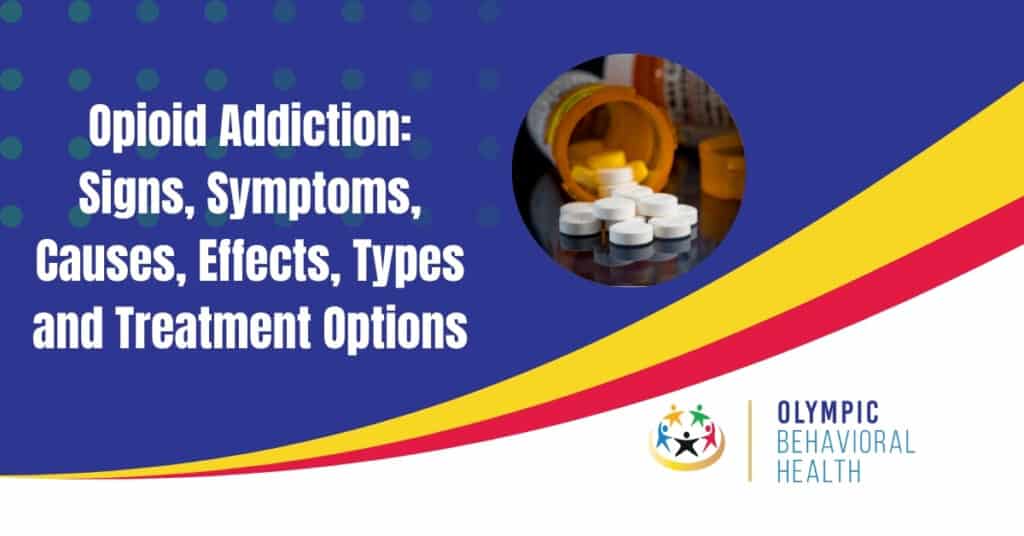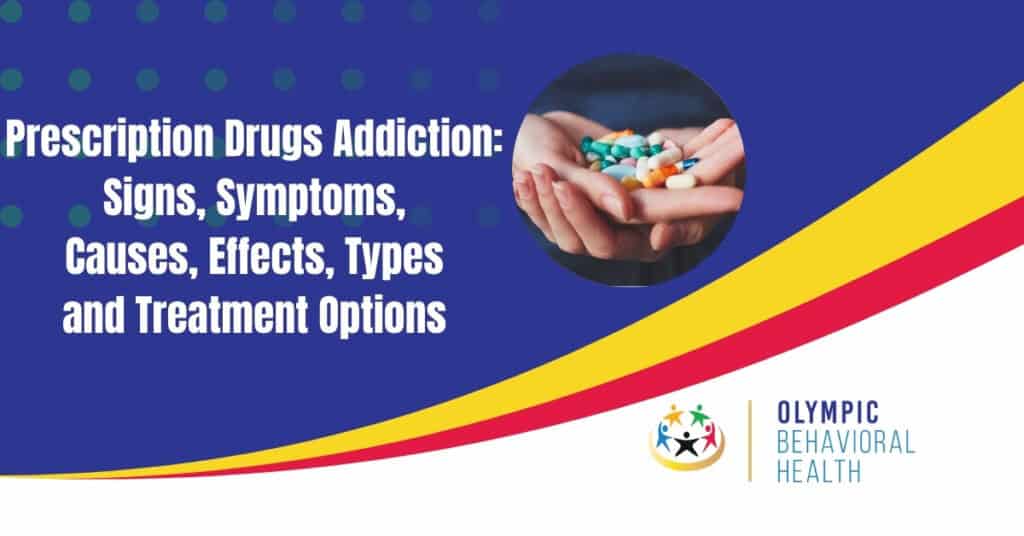Flumazenil addiction, also known as flumazenil dependency, is a condition characterized by the compulsive and uncontrollable use of the medication flumazenil. This powerful benzodiazepine antagonist is commonly used to reverse the effects of sedation caused by other drugs. In this article, we will explore the signs and symptoms of flumazenil addiction, as well as the available treatment options.
What is Flumazenil?
Flumazenil is a medication that is used to reverse the effects of certain sedative drugs. It is specifically designed to be used in emergency situations when patients have overdosed or had adverse reactions to sedatives such as benzodiazepines.
Flumazenil functions by binding to receptors in the brain, effectively blocking the effects of these sedatives and restoring normal brain function.
It is important to note that only trained healthcare professionals should administer flumazenil. It should never be used without medical supervision or for regular anxiety or sleep disorders. Flumazenil is intended for acute situations only.
The appropriate dosage of flumazenil depends on the individual’s response to the specific sedative drugs taken. It is crucial to carefully follow the instructions provided by the healthcare professional and not exceed the recommended dosage.
Adverse effects of flumazenil are rare and temporary, but may include dizziness, headache, and nausea.
How Does Flumazenil Work?
Flumazenil is a medication used to reverse the effects of sedative medications, specifically benzodiazepines. It works by blocking the same brain receptors that benzodiazepines bind to, rather than enhancing their effects.
One way Flumazenil works is by competing with benzodiazepines for receptor sites in the brain, preventing them from exerting sedative effects. This receptor blocking mechanism allows for the reversal of benzodiazepine sedation, especially in emergencies.
Another advantage of Flumazenil is its rapid onset. It takes effect within a few minutes after administration, enabling quick reversal of benzodiazepine sedation. This is particularly important in urgent situations.
Furthermore, Flumazenil‘s effects are short-lived, with a half-life of about one hour. This means that patients can regain consciousness and mental alertness quickly after its administration.
It is important to note that Flumazenil is effective only against benzodiazepines and not other types of sedative medications. Its primary purpose is to reverse the sedative effects of benzodiazepines, such as drowsiness, confusion, slowed breathing, and impaired coordination, while restoring normal mental alertness and consciousness.
It is crucial that Flumazenil is administered by healthcare professionals and tailored to each patient’s condition. It may not be suitable for everyone.
So, this is how Flumazenil works.
Is Flumazenil Addictive?
Flumazenil is not addictive. Is Flumazenil Addictive? It does not cause a craving for increased doses or lead to compulsive drug-seeking behavior. Unlike opioids or benzodiazepines, flumazenil does not produce a pleasurable effect when taken.
Flumazenil is a medication that blocks the effects of sedative medications, such as benzodiazepines. It reverses their sedative effects.
Since flumazenil blocks the effects of other drugs, it does not have the potential to produce a high or induce dependence. It does not bind to the brain’s reward system responsible for the reinforcing effects of addictive substances. Therefore, there is no risk of developing a physical or psychological addiction to flumazenil.
While flumazenil itself is not addictive, it can be used to treat individuals addicted to benzodiazepines. It can reverse the sedative effects of benzodiazepines and help individuals safely withdraw from these medications.
What Are the Side Effects of Flumazenil?
Curious about the side effects of flumazenil? Brace yourself for a rollercoaster ride through the potential consequences that this medication may bring. From grueling bouts of nausea and vomiting to the throbbing headaches that could be lurking around the corner, we’ll explore the dizzying world of flumazenil’s side effects. Prepare to navigate the treacherous territory of sedation and confusion, while keeping an eye out for any unexpected allergic reactions. It’s time to uncover the untold tale of the not-so-pleasant aftermath of flumazenil.
1. Nausea and Vomiting
Nausea and vomiting are frequent side effects associated with taking flumazenil. It is crucial to understand how to effectively handle these effects.
Nausea is a common occurrence when using flumazenil, causing feelings of queasiness and stomach discomfort. It is important to pay attention to any instances of nausea and communicate them with a healthcare professional if they persist or worsen.
Similarly, some individuals taking flumazenil may experience episodes of vomiting. If vomiting becomes frequent or severe, it is necessary to seek medical attention.
To effectively manage these side effects, the following measures can be taken:
1. Stay Hydrated: It is important to drink plenty of fluids to replace the lost fluids from vomiting and prevent dehydration.
2. Consume Light Foods: Opt for bland, lighter food options such as crackers, toast, or broth. These can help minimize stomach irritation and facilitate digestion.
3. Follow Medication Instructions: If anti-nausea or anti-vomiting medications have been prescribed, it is essential to take them as directed by your healthcare provider.
4. Rest and Relax: Find comfort in a relaxing environment to alleviate discomfort. Gentle movement or taking short walks may also prove beneficial.
5. Seek Guidance from Healthcare Provider: In cases where nausea and vomiting persist, worsen, or become unmanageable, it is crucial to reach out to a healthcare provider for further guidance.
It is important to note that the experience of side effects can vary among individuals, and not everyone will encounter nausea and vomiting while taking flumazenil. By acquiring knowledge about these effects and implementing appropriate measures, individuals can effectively manage side effects and ensure their well-being throughout the treatment process.
Headaches from flumazenil may make you question if a headache is worse than addiction itself.
2. Headaches
When using flumazenil, headaches can occur. Here are some important facts about flumazenil-related headaches:
–
Headaches are listed as a possible side effect of flumazenil. It is worth noting that not everyone will experience this, but it is important to be aware that they can occur.
–
The severity of headaches can vary, ranging from mild discomfort to intense pain. Additionally, the frequency and duration of headaches may also differ.
–
If you happen to experience headaches while using flumazenil, it is advisable to consult your healthcare provider. They will be able to assess the severity of the headaches and provide appropriate guidance.
–
It is possible that headaches may diminish as your body adjusts to the medication. However, if they persist or worsen, it is important to seek medical attention.
–
It is important to note that factors such as dehydration or stress can contribute to the occurrence of headaches. Maintaining proper hydration and managing stress levels may help alleviate flumazenil-related headaches.
Fact: According to a clinical study, approximately 10% of flumazenil users reported experiencing headaches.
Flumazenil may have you feeling dizzy and lightheaded, but at least you’ll have an excuse for stumbling through life.
3. Dizziness and Lightheadedness
Dizziness and lightheadedness are common side effects of Flumazenil. It affects the central nervous system, which can possibly cause these symptoms.
Dizziness refers to a feeling of unsteadiness or faintness, while lightheadedness is a sensation of dizziness or disorientation. The severity of dizziness and lightheadedness may vary depending on the individual and dosage.
These symptoms can occur shortly after taking Flumazenil or throughout the treatment. If dizziness or lightheadedness becomes severe or persistent, it is important to consult a healthcare professional.
In some cases, adjusting the dosage of Flumazenil or considering alternative medications may help alleviate these symptoms. It is advisable to avoid activities that require alertness, such as driving or operating machinery, if experiencing dizziness or lightheadedness.
Staying hydrated and maintaining healthy blood pressure levels can also help mitigate dizziness and lightheadedness. If you are prone to these symptoms, it is recommended to rise slowly from a sitting or lying position to prevent a sudden drop in blood pressure.
Remember to discuss any concerns or side effects with your healthcare provider for guidance and support during Flumazenil treatment.
4. Sedation and Confusion
Sedation and confusion are frequently experienced as side effects of flumazenil. Flumazenil has the potential to induce sedation, resulting in feelings of drowsiness and reduced consciousness. These sedative properties can hinder cognitive function and make it challenging to concentrate.
Furthermore, flumazenil can lead to confusion, which can impede clear thinking and decision-making. These adverse effects can have a significant impact on daily activities, such as driving or operating machinery. The severity and duration of sedation and confusion depend on the dosage. Higher doses or prolonged use of flumazenil heighten the likelihood of experiencing these side effects.
If sedation and confusion become severe or persist, it is crucial to seek medical advice. A healthcare professional can assess the symptoms and make necessary adjustments to the dosage or consider alternative medications. It is important to remain aware of these potential side effects when contemplating the use of flumazenil.
5. Allergic Reactions
Allergic reactions to flumazenil can occur. It is important to be aware of these reactions and seek immediate medical attention if they occur.
- Hives: It is possible for some individuals to develop hives after taking flumazenil. Hives are raised, itchy, and red welts on the body.
- Swelling: Flumazenil has the potential to cause swelling in areas such as the face, lips, tongue, or throat. This swelling, known as angioedema, can be severe and lead to difficulty breathing or swallowing.
- Difficulty Breathing: Allergic reactions to flumazenil can also cause difficulty breathing, characterized by symptoms like shortness of breath, wheezing, or tightness in the chest. If breathing problems occur, it is important to seek immediate medical help.
- Rash: An allergic reaction to flumazenil can result in the development of skin rashes. These rashes can be itchy, red, and appear as small bumps or larger patches.
- Anaphylaxis: Although rare, an allergic reaction to flumazenil can lead to anaphylaxis, a severe and potentially life-threatening condition. Symptoms of anaphylaxis include difficulty breathing, sudden drop in blood pressure, dizziness, rapid heartbeat, and loss of consciousness. Anaphylaxis requires immediate emergency medical attention.
Please note that the severity of allergic reactions can vary. Some individuals may experience mild symptoms, while others may have a more severe reaction. If you suspect an allergic reaction to flumazenil, it is important to stop using the medication and seek immediate medical assistance. Make sure to inform your healthcare provider about any known allergies or previous allergic reactions before taking flumazenil.
If you find yourself constantly searching for keys to the car that you haven’t driven in a week, you may be at risk of Flumazenil addiction.
Who is at Risk of Flumazenil Addiction?
Flumazenil addiction poses serious health risks. Understanding who is at risk of flumazenil addiction can help identify potential cases and provide necessary support. Here are factors that can contribute to the risk of flumazenil addiction:
1. Previous addiction history: Individuals with a history of substance abuse, such as alcohol or benzodiazepine addiction, are at higher risk. The addictive tendencies from previous addictions make them more vulnerable.
2. Co-occurring mental health disorders: People with underlying mental health conditions, such as anxiety or depression, may have an increased risk of flumazenil addiction. The drug’s ability to temporarily relieve symptoms can create reliance and lead to addiction.
3. Prolonged use of flumazenil: Individuals using flumazenil for a long time may develop tolerance and dependence, increasing the risk of addiction. Higher dosages or more frequent use can further increase this risk.
4. Environmental factors: The individual’s living environment can contribute to the risk. Peer influence, easy access to the medication, and a lack of support or resources to address addiction can all play a role.
5. Genetic predisposition: Genetic factors can influence susceptibility to addiction. Certain genetic variations may make some individuals more vulnerable to flumazenil addiction or other substances.
6. Underlying trauma: Individuals with significant trauma or unresolved emotional issues may turn to flumazenil for self-medication. This reliance can lead to addiction as they use the drug to cope with emotional pain.
It is crucial to identify individuals at risk of flumazenil addiction and provide appropriate support and intervention. Recognizing these risk factors can help healthcare professionals, family members, and communities effectively prevent and address addiction.
How to Recognize Flumazenil Addiction?
Flumazenil addiction can significantly harm health and well-being. It is important to know how to recognize flumazenil addiction. Here are key signs to look out for:
1. Increased tolerance: Individuals who are addicted to flumazenil require larger doses over time to achieve the desired effect. This is a clear indication of addiction.
2. Withdrawal symptoms: When individuals try to quit flumazenil, they may experience various withdrawal symptoms such as anxiety, restlessness, insomnia, nausea, and tremors. These symptoms can make it challenging to quit the drug.
3. Neglecting responsibilities: Addiction often leads individuals to neglect their personal and professional responsibilities. They may frequently miss work, skip important events, or disregard relationships due to their preoccupation with the drug.
4. Failed attempts to quit: Despite the desire to quit, individuals struggling with flumazenil addiction find it difficult to do so. They may attempt to quit multiple times without success.
5. Preoccupation with obtaining the drug: Flumazenil addicts spend a significant amount of time and energy trying to acquire the drug. They may even engage in illegal activities or manipulate medical professionals to obtain prescriptions.
6. Social isolation: Addiction causes people to withdraw from their family and friends. They lose interest in activities they once enjoyed and prioritize the use of flumazenil instead.
7. Physical and psychological changes: Prolonged use of flumazenil brings about physical and psychological changes, including weight loss, changes in appearance, mood swings, irritability, and impaired judgment.
8. Financial difficulties: Addiction to flumazenil can result in financial strain. Individuals may spend excessive amounts of money on the drug, leading to instability and debt.
9. Neglected appearance and hygiene: Addicted individuals often lose interest in personal hygiene and neglect their physical appearance. They may appear disheveled, with unkempt hair and clothing.
10. Continuing use despite negative consequences: Despite experiencing health problems, strained relationships, and legal issues, flumazenil addicts continue to use the drug. This behavior clearly demonstrates addiction.
Recognizing the signs of flumazenil addiction is crucial in obtaining the necessary support and treatment. If you or someone you know exhibits these signs, it’s important to seek professional help promptly.
What Are the Consequences of Flumazenil Addiction?
Discover the dark side of flumazenil addiction and its devastating consequences. From the physical toll it takes on your health to the mental and emotional implications that follow, we’ll delve into the harsh realities of this addiction. Prepare to explore the social and relationship implications as well, uncovering how flumazenil can cast a shadow over every aspect of your life. Brace yourself for eye-opening insights as we explore the deep and lasting consequences of flumazenil addiction.
1. Physical Health Implications
Flumazenil addiction carries significant physical health implications. It is crucial to understand the potential risks associated with prolonged use or abuse of this medication.
1. Liver Damage: Prolonged use or high doses of Flumazenil can harm the liver, potentially leading to liver dysfunction or failure.
2. Cardiovascular Issues: Flumazenil has an impact on the cardiovascular system, causing changes in heart rate and blood pressure. It may elevate the risk of heart palpitations, irregular heartbeat, and high blood pressure. Continued use of Flumazenil can strain the heart, increasing the likelihood of cardiovascular complications.
3. Respiratory Problems: Flumazenil can depress the respiratory system, resulting in breathing difficulties or respiratory failure in severe instances. This can be particularly dangerous for individuals with pre-existing respiratory conditions such as asthma or COPD.
4. Gastrointestinal Issues: Flumazenil disrupts normal digestion, leading to issues like nausea, vomiting, and diarrhea. These symptoms can cause dehydration and nutrient deficiencies if left untreated.
5. Immune System Suppression: Prolonged use of Flumazenil weakens the immune system, making individuals more susceptible to infections and illnesses. This can result in frequent illnesses, slower healing times, and a compromised immune response.
The severity of these physical health implications can vary depending on the individual, dosage, and duration of Flumazenil use. If any concerning symptoms arise, it is important to seek immediate medical attention.
Pro-tip: If you or someone you know is struggling with Flumazenil addiction, promptly seek professional help from a healthcare provider or addiction specialist. Treatment options such as medical detoxification, inpatient rehabilitation, outpatient treatment programs, and support groups can provide the necessary support for recovery and minimize the physical health consequences of addiction.
Be prepared for a rollercoaster of emotions – Flumazenil addiction takes you from calm to chaos in record time.
2. Mental and Emotional Implications
Flumazenil addiction can greatly affect an individual’s mental and emotional well-being. It is vital to acknowledge these consequences for comprehensive treatment and support. Here are the key aspects to consider:
1. Emotional Instability: Addiction to Flumazenil can result in frequent mood swings, ranging from anger to sadness. These fluctuations have a significant impact on daily lives and relationships.
2. Cognitive Impairment: Prolonged use of Flumazenil impairs memory, attention, and decision-making. Users struggle with concentration and have difficulty retaining information or making rational judgments.
3. Psychological Dependence: Flumazenil addiction creates intense cravings and a compulsive need for the drug, which damages mental well-being.
4. Anxiety and Panic Disorders: Flumazenil addiction worsens existing anxiety disorders or can lead to the development of new ones. Users experience heightened anxiety, panic attacks, and restlessness.
5. Impaired Social Functioning: Flumazenil addiction hinders social functioning. Users isolate themselves, struggle with relationships, and face challenges in employment and social activities.
Addressing these consequences is crucial for successful recovery. Treatment should provide psychological support, therapy, and counseling to develop healthy coping mechanisms and address emotional and cognitive issues. Holistic approaches that consider both mental and emotional aspects promote long-term recovery and overall well-being.
3. Social and Relationship Implications
Social and relationship implications of Flumazenil addiction can significantly impact an individual’s life. Here are some consequences:
1. Isolation: Flumazenil addiction can lead to isolation from friends and family. Individuals may withdraw from social activities, preferring to be alone or with other drug users.
2. Breakdown of relationships: Flumazenil addiction strains relationships and often leads to conflict. Trust is broken, and loved ones feel hurt and betrayed.
3. Poor communication: Addiction affects communication skills, leading to misunderstandings and relationship breakdowns. Individuals may become defensive or avoid important discussions.
4. Financial strain: Supporting a Flumazenil addiction can be expensive, resulting in financial difficulties. This strains relationships and leads to conflicts over money.
5. Loss of support system: Addiction causes individuals to lose their support system as friends and family distance themselves due to the addiction’s negative consequences.
6. Neglected responsibilities: Addiction causes individuals to neglect their responsibilities, such as work, childcare, or household duties. This leads to frustration and resentment from loved ones.
7. Codependency: Relationships may become codependent, with loved ones enabling the addiction or sacrificing their own needs to help the individual.
8. Emotional turmoil: The emotional toll of addiction affects relationships, causing mood swings, irritability, and unpredictable behavior.
9. Loss of intimacy: Addiction interferes with intimacy and sexual relationships. Individuals prioritize drug use over emotional and physical connection with their partners.
10. Legal issues: Flumazenil addiction can lead to legal problems like arrests or convictions. This strains relationships and further isolates the individual.
Seeking help and support for Flumazenil addiction is vital to mitigate these social and relationship implications. Treatment options such as medical detoxification, inpatient rehabilitation, outpatient treatment programs, and support groups provide necessary support for recovery and rebuilding relationships.
How to Treat Flumazenil Addiction?
Looking to conquer flumazenil addiction? Let’s dive into how to treat this challenging condition. We’ll explore effective methods like medical detoxification, inpatient rehabilitation, outpatient treatment programs, and the power of support groups and therapy. With these diverse approaches, we aim to provide you with a comprehensive guide to help you or your loved ones overcome flumazenil addiction and regain control of your lives. Let’s embark on this journey towards recovery together.
1. Medical Detoxification
Medical Detoxification is a crucial step in treating flumazenil addiction. It involves the supervised removal of flumazenil from the body and the management of withdrawal symptoms. The procedure consists of several important steps.
Firstly, the individual undergoing detoxification is evaluated by medical professionals. This evaluation determines the severity of addiction and identifies any underlying medical conditions that may affect the treatment.
Throughout the detoxification process, medical staff closely monitor vital signs, symptoms, and overall health. This medical monitoring ensures the individual’s safety and well-being.
Medication-assisted treatment may be prescribed to manage withdrawal symptoms and cravings. This approach reduces the risk of relapse and helps the individual cope with the challenges of detoxification.
Psychological support is also a crucial aspect of medical detoxification. In addition to medical supervision, counseling, therapy, and support groups are provided to address the emotional and psychological aspects of addiction.
Depending on the level of dependency and addiction severity, flumazenil may be gradually reduced to minimize withdrawal symptoms. This gradual tapering process is carefully monitored by medical professionals.
Additionally, medical staff closely monitor individuals for any adverse reactions or complications during detoxification. This ensures prompt intervention if any complications arise due to withdrawal symptoms.
It’s important to note that medical detoxification is just the initial step in treating flumazenil addiction. After detoxification, individuals are encouraged to continue with further treatment, such as inpatient rehabilitation or outpatient programs, to support their recovery journey.
Pro tip: Always seek guidance from medical professionals when undergoing detoxification. This ensures the process is safe and effective for breaking free from flumazenil addiction and starting the path to recovery.
Recovering from flumazenil addiction is no walk in the park, but inpatient rehabilitation offers the chance to kick addiction’s ass with 24/7 support and zero tolerance for flumazenil‘s shenanigans.
2. Inpatient Rehabilitation
Inpatient rehabilitation is essential for treating flumazenil addiction. Here are key points to consider:
-
Inpatient rehabilitation provides a structured and supportive environment for individuals struggling with flumazenil addiction. It involves staying in a residential facility with round-the-clock care.
-
Inpatient rehabilitation programs offer tailored therapeutic interventions such as individual counseling, group therapy, family therapy, and specialized addiction education.
-
During inpatient rehabilitation, medical professionals closely monitor the individual’s physical and mental health, especially during detoxification when withdrawal symptoms can be severe.
-
Inpatient rehabilitation programs incorporate holistic approaches like yoga, meditation, art therapy, and fitness programs to address various aspects of addiction.
-
One primary benefit of inpatient rehabilitation is the removal of triggers and temptations that may lead to relapse.
A true story that highlights the importance of inpatient rehabilitation is Jason’s journey to recovery. He had struggled with flumazenil addiction for years, causing devastating consequences in his personal and professional life. With his family’s support, Jason decided to seek help in an inpatient rehabilitation center.
During rehab, Jason received comprehensive treatment that addressed the root causes of his addiction. Individual counseling helped him understand the emotional issues underlying his addiction. Group therapy sessions fostered a sense of community and support.
The structured environment of the facility provided Jason with the necessary tools to navigate early recovery stages. Medical professionals closely monitored his withdrawal symptoms and adjusted his treatment plan accordingly. He also participated in holistic activities like art therapy and mindfulness exercises to develop healthy coping mechanisms.
After completing the inpatient rehabilitation program, Jason continued his recovery journey through outpatient treatment and support groups. With the skills and support gained during rehab, Jason has maintained sobriety and rebuilt his life.
Outpatient treatment programs: because addiction shouldn’t keep you tied down, but it should definitely be kept in check.
3. Outpatient Treatment Programs
Outpatient treatment programs are an effective solution for Flumazenil addiction. They promote flexibility and support while allowing individuals to maintain their daily routines. Let’s delve into the key highlights of outpatient treatment programs:
1. Comprehensive assessment: These programs initiate with an assessment to pinpoint the specific needs of the individual and create a personalized treatment plan.
2. Flexible scheduling: Outpatient treatment programs provide the convenience of attending sessions during the day or evening, allowing individuals to seamlessly continue with their work, school, or other responsibilities.
3. Individual and group therapy: Outpatient treatment programs encompass individual therapy to address underlying issues and group therapy to foster support and establish a strong network.
4. Medication-assisted treatment: In outpatient programs, severe withdrawal symptoms can be effectively managed through the use of medications such as naltrexone or buprenorphine.
5. Education and skill-building: These programs prioritize educating individuals on addiction, imparting relapse prevention strategies, teaching coping mechanisms, and providing life skills training.
6. Family involvement: Outpatient treatment programs may offer family therapy sessions as a means to enhance communication, understanding, and resolve family dynamics connected to addiction.
7. Continuum of care: Upon the completion of the program, outpatient programs extend their support through aftercare services, including ongoing therapy, support groups, and referrals to community resources.
It is crucial to note that the effectiveness of outpatient treatment programs may vary depending on the individual’s commitment and active participation in their recovery journey.
4. Support Groups and Therapy
Support groups and therapy are essential for treating Flumazenil addiction. They play a crucial role in providing tools and the necessary support for overcoming addiction and maintaining sobriety.
Individual therapy involves trained counselors who assist individuals in exploring the root causes of their addiction, developing effective coping mechanisms, and setting recovery goals.
Group therapy, on the other hand, offers a safe and supportive environment where individuals can openly share their experiences, gain valuable insights from others, and develop a better understanding of addiction.
To maintain sobriety and pursue personal growth, 12-step programs like Narcotics Anonymous (NA) provide ongoing support and fellowship.
Through cognitive-behavioral therapy (CBT), negative thoughts and behaviors are identified, replaced with healthier alternatives, and individuals can develop resilience and problem-solving skills.
Family therapy engages family members in addressing relationship dynamics, communication issues, and provides education and support throughout the recovery process.
Additionally, holistic therapies such as art therapy, mindfulness meditation, yoga, and acupuncture promote relaxation, self-awareness, and stress reduction, complementing traditional treatments.
Aftercare support is crucial as it ensures that support groups and therapy continue even after the completion of treatment, helping individuals navigate challenges, reinforce relapse prevention strategies, and maintain accountability.
It’s crucial to find a support group or therapy that aligns with an individual’s specific needs. Each person’s recovery journey is unique, and having the right support system greatly enhances long-term success.
Can Klonopin cause Addiction?
Yes, Klonopin (the brand name for the benzodiazepine drug clonazepam) can cause addiction if used long-term or in high doses. Benzodiazepines are a highly addictive class of medication, and Klonopin is no exception. Regular use can lead to tolerance, dependence, and withdrawal symptoms when use is stopped.
Signs of Klonopin addiction may include an increased tolerance, difficulty controlling use, and withdrawal symptoms when not using the drug. Treatment options for Klonopin addiction may include therapy, medication-assisted treatment, and support groups. It is important to seek help from a medical professional if you or a loved one is struggling with Klonopin addiction, when you want to learn more see here.
Can Bromazepam cause Addiction?
Yes, Bromazepam, a medication commonly used to treat anxiety and insomnia, has the potential to cause addiction. While it is not considered to be as addictive as other benzodiazepines like Xanax or Valium, it can still lead to physical and psychological dependence if used for an extended period of time.
Signs of addiction to Bromazepam may include increased tolerance, withdrawal symptoms when trying to stop or reduce use, and continued use despite negative consequences. Treatment for addiction to Bromazepam may involve a gradual tapering off of the medication under medical supervision, along with therapy and support groups to address any underlying issues that may have contributed to the addiction. For more information on benzodiazepine addiction and treatment options, please read our article.
Get help for your Benzo Addiction
Finding help for your Benzo addiction can be challenging, but taking the first step is crucial. Our facility is here to support you through this difficult journey. By reaching out and seeking help, you are opening the door to a healthier, happier life. Let us guide you towards recovery.

Share This Post



